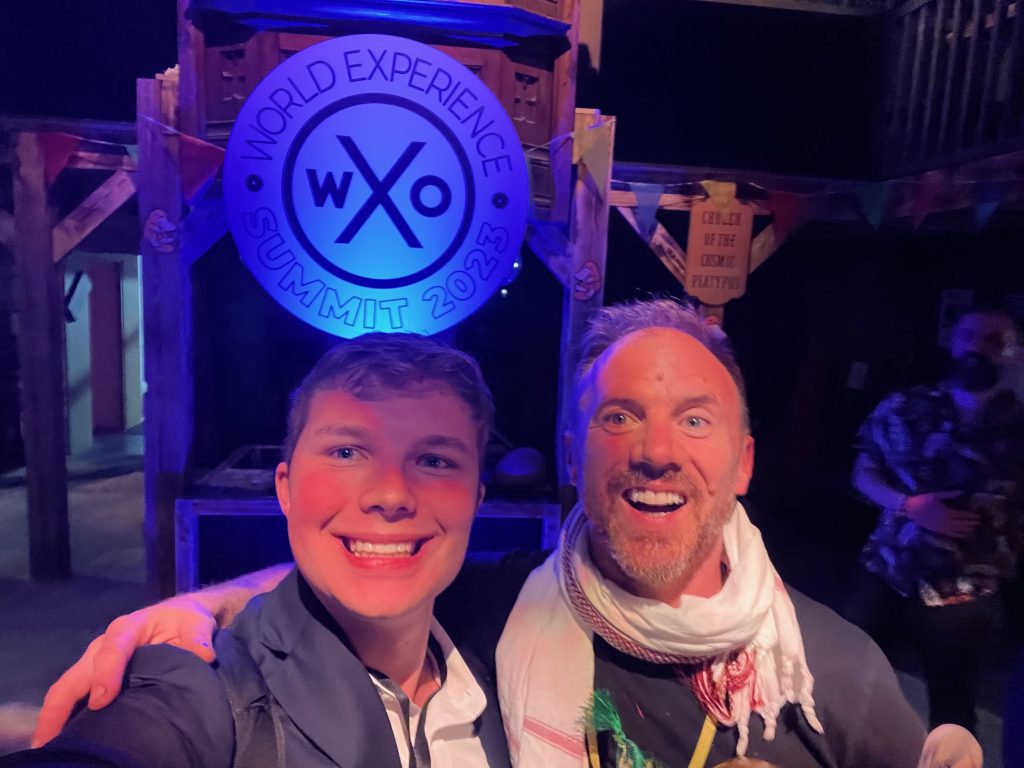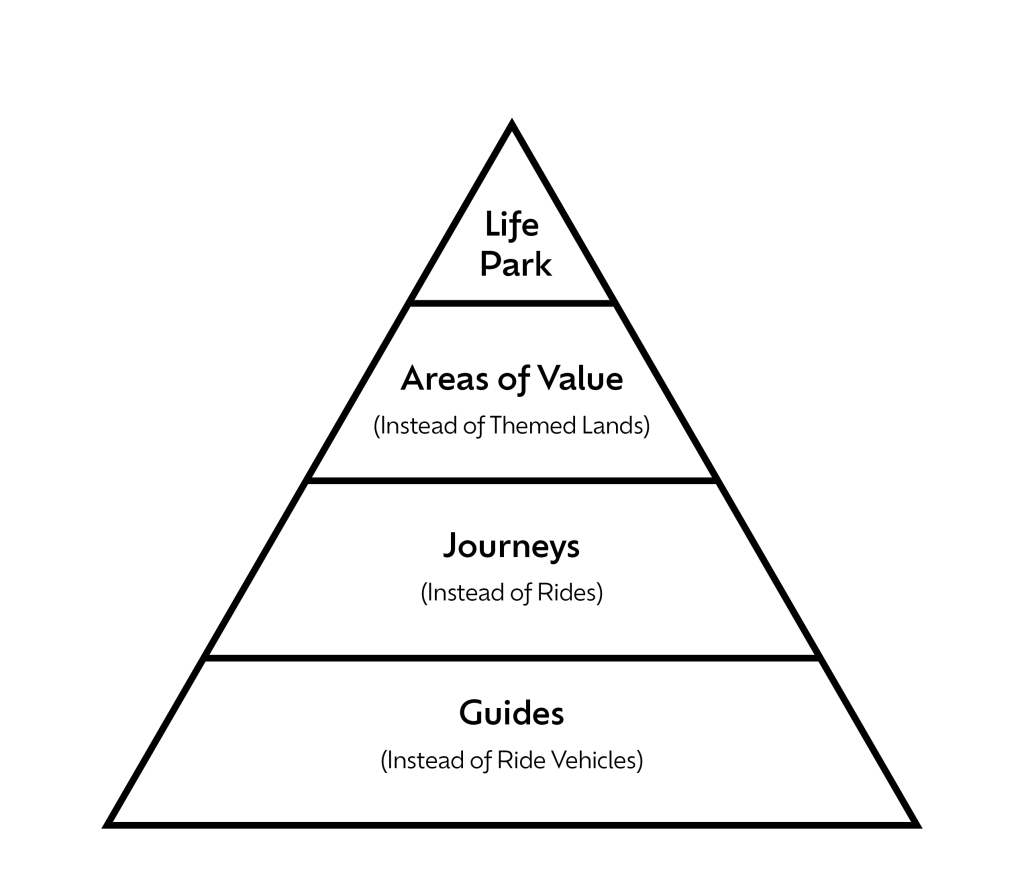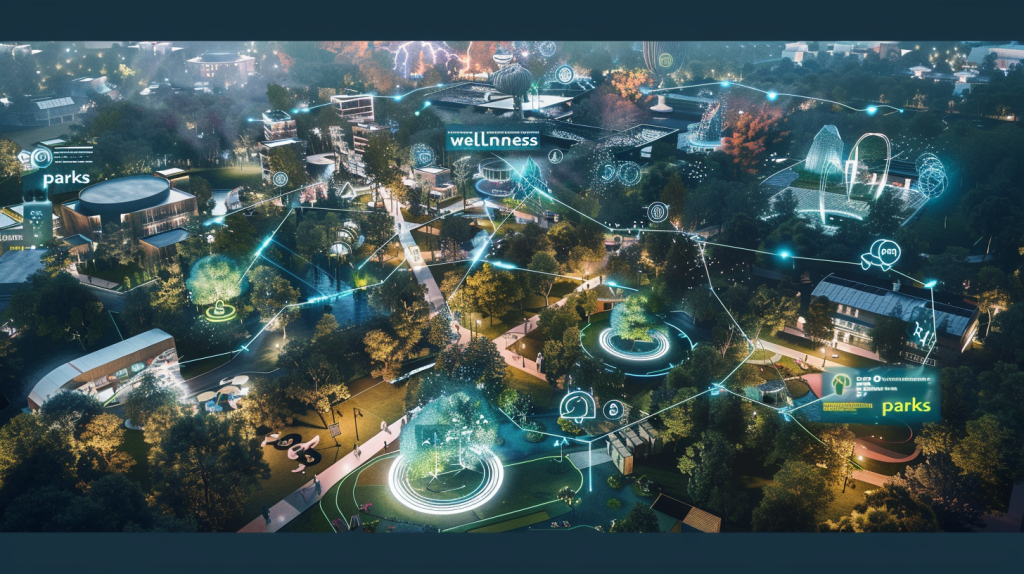WXO Emerging Talent Member Matthew Waller shares his reflections on how in the shift from Experience Economy to Transformation Economy, we might also shift from the theme park to a “life park” that helps aspirants achieve the transformations they are looking for in life.
Waller recently presented his ideas as a WXO PlayLab in which participants created their own ride (or journey) in the “life park”. Here’s a summary of his initial thinking, which represent his own views and not that of any company.
Three years ago, while at Georgia Tech, I read The Experience Economy by Joe Pine and Jim Gilmore. The book outlines different economic offerings businesses can provide and how customers now desire experiences, not just goods and services.
After reading the book, I became curious about experience design, engaged with numerous industry professionals, and attended conferences centered around experiences. The World Experience Organization (WXO) does a great job of outlining experience principles.
Reflecting on my travels to London to speak at the World Experience Summit last year caused me to think to myself, “It is great that we are talking about experiences: but why are we not talking about the next evolution of economic offerings?” Joe Pine and Jim Gilmore called these economic offerings “transformations”.

Going into my senior year of college and interested in theme park/themed entertainment design, I began to wonder what a theme park would look like within the Transformation Economy. My observations and reflections over the past three years culminated in my final capstone project, a document identifying transformation-related terminology, their impacts, and a conceptual theme park called a “life park.”
Life parks represent a shift towards individualized, life-centered designs, creating self-discovery and narrative exploration. It is a concept where people go to enhance their identity and help them fulfill their (deepest) desires. While one can learn more about the concept and find a link to my “paper” in my portfolio, below is a summary of the document.
The Terminology

To understand what the next evolution of a theme park could be, I had to create terms that define what happens in this “park.” Pine and Gilmore already outlined that people offered transformations are called aspirants, while people offered experiences are called guests. The result of my findings was a list of terms that could be used to describe the affected outcomes (or impacts) of the park on aspirants.
For example, in a life park, the aspirant’s identity is affected, rather than their emotions (as in a theme park). What one affects is the soul, rather than just the mind. Aspirants take action, rather than just integrate their thoughts. Instead of taking agency in their interactions, aspirants are in a state of presence with who one is and their surrounding environment.
These people are in an embodied transformation (or state of embodiment) rather than just an immersive experience (or state of immersion). They are trying to create meaning in their lives rather than just guests making memories. These words are the difference in terminology between describing theme parks today and the concept of “life parks.”
The Life Park

The next step of the process was to identify some terms that outlined this new concept for a park. “Theme” is what makes a theme park different from an amusement park. The theme drives the stories told within the park.
But what makes life parks different from theme parks is “purpose.” The purpose is what drives people’s stories because people ARE the story. For whatever purpose that is, it is to improve their values and who one is, as one strives to reach their self-actualization.
The life park also does not have “lands” but instead has “areas of value.” The values I am referring to are healthy, wealthy, and wise. These values come from new ideas released by Joe Pine in his new Substack offering and recent WXO Campfire. The values are also based on a quote Benjamin Franklin once said, “Early to bed, early to rise, makes a man healthy, wealthy, and wise.”
Then, instead of going on rides, people go on journeys. These journeys could be individualized, in groups, or with many people, and depend on the desired transformations. Instead of sitting in ride vehicles to experience the ride, aspirants have guides to take them on their journey.

So, imagine one is inside this “life park” where the center of the area is about understanding one’s identity (their purpose), who one used to be, who one is now, and who one aspires to become. This area of purpose helps one find a value between healthy, wealthy, or wise that one wants to improve.
This process could be done with advancements in artificial intelligence to help aspirants identify which values to change/enhance. Then, aspirants could travel to these areas of values, and go on guided customized journeys so they can achieve their aspirations and change (and thus, transform) their lives.
Where Can We Go From Here?

While the concepts presented are preliminary and subject to revision, I hope this work ignites discussion among experience designers. Transformations may not occur without leveraging commodities, goods, services, and experiences. These offerings collectively integrate society to shape transformations and aid individuals in reaching their fullest potential. To become transformation designers, strategists, or similar, we may need to master experiences first, but it may not hurt to think about what could be next.
Since posting the document, many people have suggested some great points about transformations to consider. Some of these topics of feedback include looking at the park as a part of urban design planning, creating more inclusive environments that cater to all demographics, looking at transformations as building community rather than just the individual, and much more.
This feedback and discussions are great and could help the experience design industry figure out how businesses could offer transformations and what they may encompass. Please feel free to reach out if you have any comments, suggestions, or feedback.
The WXO Take-Out
Next time you’re designing an experience, ask yourself the following questions:
- What journey are you looking to take people on?
- What “aspiration” are you designing for?
- What might your own equivalent of the “life park” look like?
To get more insights from experts in the Experience Economy, attend digital and IRL events, and access our exclusive online community, apply to join the WXO now.






